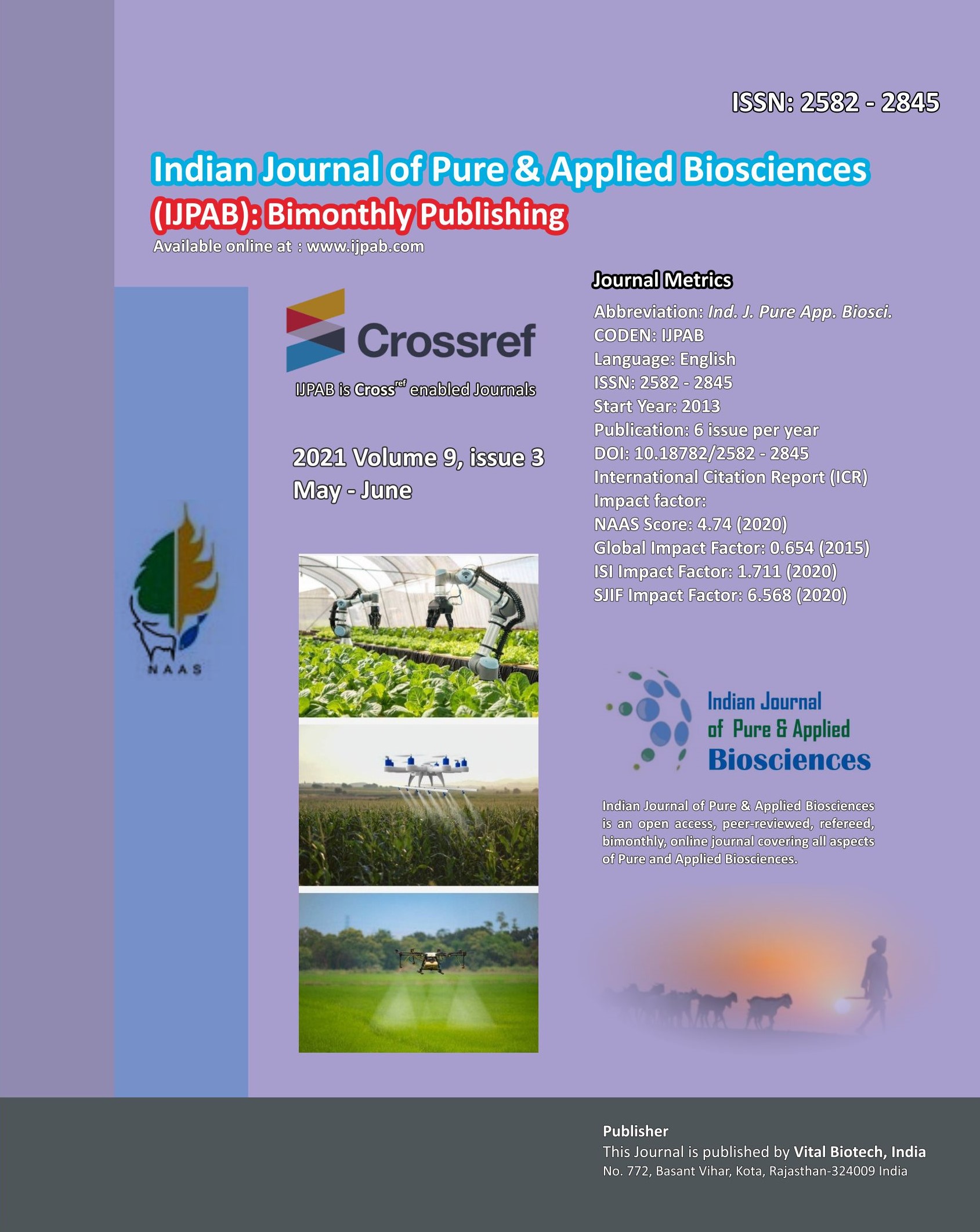-
No. 772, Basant Vihar, Kota
Rajasthan-324009 India
-
Call Us On
+91 9784677044
-
Mail Us @
editor@ijpab.com
Indian Journal of Pure & Applied Biosciences (IJPAB)
Year : 2021, Volume : 9, Issue : 3
First page : (266) Last page : (275)
Article doi: : http://dx.doi.org/10.18782/2582-2845.8632
Investigation of Climate Change Anomaly by Using Nonparametric Test for Navsari District of South Gujarat
Neeraj Kumar1*, M.L. Patel2, B.M. Mote3, A.L. Chalodia4, Alok Srivastava5 and M. J. Zinzala6
*1,2,6Department of Agronomy, College of Agriculture, Navsari Agricultural University, Bharuch, Gujarat, India
3Directorate of Research Office, Navsari Agricultural University, Navsari, 396 450, Gujarat, India
4Main Sorghum Research Station, Navsari Agricultural University, Surat, 390007, Gujarat, India
5Department of Statistics College of Agriculture, Navsari Agricultural University, Bharuch, Gujarat, India
*Corresponding Author E-mail: neeraj34012@gmail.com
Received: 10.02.2021 | Revised: 17.03.2021 | Accepted: 26.03.2021
ABSTRACT
Navsari district of rainfall was shows highest increasing rainfall trend obtained September and negative January, July, October, November and December. The regression slope of the yearly time series is about 12.35 mm/36 years. Maximum temperature shows the highest increasing trend in month October, followed by December and August. The month highest decreasing trend was noticed that January, followed by February and July. The regression slope of the yearly time series is about 0.025°C/36 years. Minimum temperature highest values of the slope (0.109°C/36 year) with high value of regression Slope of determination (0.111°C), the annual Kendall’s tau statistic (0.492°C/36 year), the Kendall Score (310). All the month January to December shows increasing trend. The highest increasing trend found that November, followed by March and July, respectively. This finding shows that all the month shows increasing trend with the range between 0.308°C to 0.390°C. In case of RH-I the highest increasing trend shows September, followed by April and June. Similarly decreasing trend was found that January, followed by February and October, respectively. Relative humidity-II increasing trend was found only at the September month 0.084%, the increasing trend was detected in January to August and October to December, respectively. The strongest trend in the Bright sunshine hour’s decline of all month’s average daily sunshine hours was for the Navsari district. No significant trends were detected in all months and seasons for all weather elements. A similar trend was found in Sen’s slope and regression slope all the months for all the weather elements.
Keywords:Mann Kendall Test, Tmax, Tmin, RH-I, RH-II and Bright Sunshine Hour.
Full Text : PDF; Journal doi : http://dx.doi.org/10.18782
Cite this article: Kumar, N., Patel, M. L., Mote, B. M., Chalodia, A. L., Srivastava, A., & Zinzala, M. J. (2021). Investigation of Climate Change Anomaly by Using Nonparametric Test for Navsari District of South Gujarat, Ind. J. Pure App. Biosci. 9(3), 266-275. doi: http://dx.doi.org/10.18782/2582-2845.8632


